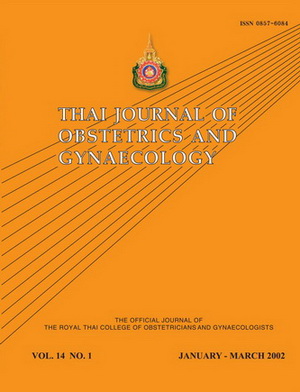Assessment of Fetal Skeletal Abnormality by Ultrasonography
Main Article Content
Abstract
Reported rates of sonographic detection of fetal anomaly vary widely. The purpose
of this study was to determine the ability of the Fetal Medicine Unit at the University College
Hospital London, in detecting fetal skeletal anomaly and to compare the results with other
published series. The sonographic studies done in 208 skeletal abnormalities over 6 years
period with pregnancy outcomes established by medical records and pathologic results of
the infants whether born alive or dead were compared. Of these 65 (31%) cases were
chromosomally abnormal, 20 (9%) cases had neural tube defects (NTD), 15 (7%) cases were
multiple fetal abnormalities, 6 (3%) cases were intrauterine growth retardation, 35 (17%) cases
had positional deformities, 8 (4%) cases were with formation of individual bones, 2 (1%) cases
with non-syndromic digital abnormalities and 30 (14%) cases had skeletal dysplasias. In 17
(8%) cases no diagnosis was established whether based on gross morphology or pathological
reports. The postnatal examinations confirmed the prenatal sonographic prediction in 122
(58.7%) cases. The prediction rate varies from 90% for cases of NTD to 36% for cases of
skeletal dysplasias. These results compare favorably with those reported in other series.
of this study was to determine the ability of the Fetal Medicine Unit at the University College
Hospital London, in detecting fetal skeletal anomaly and to compare the results with other
published series. The sonographic studies done in 208 skeletal abnormalities over 6 years
period with pregnancy outcomes established by medical records and pathologic results of
the infants whether born alive or dead were compared. Of these 65 (31%) cases were
chromosomally abnormal, 20 (9%) cases had neural tube defects (NTD), 15 (7%) cases were
multiple fetal abnormalities, 6 (3%) cases were intrauterine growth retardation, 35 (17%) cases
had positional deformities, 8 (4%) cases were with formation of individual bones, 2 (1%) cases
with non-syndromic digital abnormalities and 30 (14%) cases had skeletal dysplasias. In 17
(8%) cases no diagnosis was established whether based on gross morphology or pathological
reports. The postnatal examinations confirmed the prenatal sonographic prediction in 122
(58.7%) cases. The prediction rate varies from 90% for cases of NTD to 36% for cases of
skeletal dysplasias. These results compare favorably with those reported in other series.
Article Details
How to Cite
(1)
Chawanpaiboon, S.; Naoum, H. G.; Chitty, L. Assessment of Fetal Skeletal Abnormality by Ultrasonography. Thai J Obstet Gynaecol 2017, 14, 35-44.
Section
Original Article


